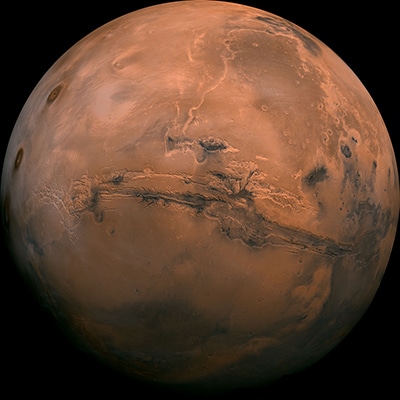According to study co-author Professor Hrvoje Tkali of the Australian National University (ANU), the Martian core, which is smaller than the Earth’s, has a diameter of roughly 3,620 kilometres. He said, “Our research through deep planetary scan presents an innovative method using a single instrument to scan the interior of any planet in a way that’s never been done before.”
A single seismometer can now be used to investigate the deep interiors of planets in our solar system, say ANU scientists.
In order to determine whether planets in our solar system have cores in their centres of existence, seismologists from The Australian National University (ANU) have developed a new technique to scan the deep interior of planets.
The scanning technique uses sound waves to produce images of a patient’s body similar to an ultrasound scan and only needs one seismometer on a planet’s surface to function, and can also be used to verify the size of a planet’s core. The study has been published in Nature Astronomy, a peer-reviewed scientific journal published by Nature Portfolio.
The scientists verified that the Red Planet has a huge core at its centre, which was first supported by a team of scientists in 2021, by scanning the whole interior of Mars with the ANU model.
Scientists can gain more knowledge about a planet’s past and evolution by confirming the existence of a planetary core, which researchers refer to as the “engine room” of every planet. It can also aid researchers in figuring out when a planet’s magnetic field first developed and then vanished.

A planet’s magnetic field is actively maintained by its core. If this is the case with Mars, it may shed light on why, unlike Earth, the Red Planet no longer has a magnetic field, which is essential to the survival of all life.
“A magnetic field is important because it shields us from cosmic radiation, which is why life on Earth is possible.” said lead author Dr. Sheng Wang, from ANU. The ANU team measured particular types of seismic waves on Mars using a single seismometer. As they ricochet throughout the Martian core, the seismic waves that were caused by marsquakes emit a variety of signals, or “echoes,” that evolve over time. The Martian core is penetrated by and reflected by these seismic waves.
According to Professor Tkali, scientists are interested in “late” and “weaker” signals that can continue to exist for hours after being released by tremors, meteoroid impacts, and other means.
Deep Planetary scan confirm Martian Core
The Aussie team measured particular types of seismic waves on Mars using a single seismometer. As they ricochet throughout the Martian interior, the seismic waves that were caused by marsquakes emit a variety of signals, or “echoes,” that evolve over time. The Martian core is penetrated by and reflected by these seismic waves.
According to Professor Tkali, scientists are interested in “late” and “weaker” signals that can continue to exist for hours after being released by tremors, meteoroid impacts, and other means to confirm the martian core .
The researchers anticipate that this brand-new seismometer method, created by the Australian National University, will be implemented to assist scientists to understand more about the moon and our other planetary neighbours.
There is an opportunity for further research using new and more advanced sensors, according to Professor Tkali. “The US, China, and Australia want to send seismometers to the moon, and Australia also has hopes to participate in future missions”
While there are many studies on planetary cores, says Wang, the images they have to work with are still very blurry, but the new instruments they will be working, should provide them with sharper pictures, which would help them to answer questions about how big cores are and the type of form they take. The method of using a single seismometer, according to the researchers, is also a cost-effective way to confirm the existence of a planetary core.
Scientists from ANU used information from the seismometer attached to NASA‘s InSight lander, which has been gathering data about marsquakes, Martian weather, and the planet’s interior since landing on Mars in 2018.












